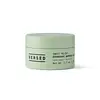What's inside
What's inside
 Key Ingredients
Key Ingredients

 Benefits
Benefits

 Concerns
Concerns

 Ingredients Side-by-side
Ingredients Side-by-side

Water
Skin ConditioningPrunus Armeniaca Kernel Oil
MaskingLauryl Laurate
Skin ConditioningPolyhydroxystearic Acid
EmulsifyingStearyl Behenate
EmollientUndecane
EmollientGlycerin
HumectantPolyglyceryl-2 Dipolyhydroxystearate
Skin ConditioningTridecane
PerfumingPolyglyceryl-3 Diisostearate
EmulsifyingSaccharomyces Ferment
Skin ConditioningGarcinia Indica Seed Butter
Skin ConditioningMyristyl Myristate
EmollientPlatonia Insignis Seed Butter
EmollientHelianthus Annuus Seed Wax
Skin ConditioningTocopherol
AntioxidantPisum Sativum Extract
Skin ConditioningLauroyl Lysine
Skin ConditioningCaprylyl Glycol
EmollientGlyceryl Behenate
Emollient1,2-Hexanediol
Skin ConditioningMagnesium Sulfate
Ethylhexylglycerin
Skin ConditioningPotassium Sorbate
PreservativeSodium Benzoate
MaskingBenzyl Alcohol
PerfumingWater, Prunus Armeniaca Kernel Oil, Lauryl Laurate, Polyhydroxystearic Acid, Stearyl Behenate, Undecane, Glycerin, Polyglyceryl-2 Dipolyhydroxystearate, Tridecane, Polyglyceryl-3 Diisostearate, Saccharomyces Ferment, Garcinia Indica Seed Butter, Myristyl Myristate, Platonia Insignis Seed Butter, Helianthus Annuus Seed Wax, Tocopherol, Pisum Sativum Extract, Lauroyl Lysine, Caprylyl Glycol, Glyceryl Behenate, 1,2-Hexanediol, Magnesium Sulfate, Ethylhexylglycerin, Potassium Sorbate, Sodium Benzoate, Benzyl Alcohol
Carthamus Tinctorius Seed Oil
MaskingButyrospermum Parkii Butter
Skin ConditioningSqualane
EmollientVitis Vinifera Seed Oil
EmollientRicinus Communis Seed Oil
MaskingHelianthus Annuus Seed Wax
Skin ConditioningPolyhydroxystearic Acid
EmulsifyingRhus Verniciflua Peel Wax
Glyceryl Laurate
EmollientCetearyl Alcohol
EmollientAvena Sativa Kernel Oil
Skin ConditioningTocopherol
AntioxidantHelianthus Annuus Seed Oil
EmollientCeramide NP
Skin ConditioningAscorbyl Palmitate
AntioxidantGlycerin
HumectantLauric Acid
CleansingCarthamus Tinctorius Seed Oil, Butyrospermum Parkii Butter, Squalane, Vitis Vinifera Seed Oil, Ricinus Communis Seed Oil, Helianthus Annuus Seed Wax, Polyhydroxystearic Acid, Rhus Verniciflua Peel Wax, Glyceryl Laurate, Cetearyl Alcohol, Avena Sativa Kernel Oil, Tocopherol, Helianthus Annuus Seed Oil, Ceramide NP, Ascorbyl Palmitate, Glycerin, Lauric Acid
 Reviews
Reviews

Alternatives
Ingredients Explained
These ingredients are found in both products.
Ingredients higher up in an ingredient list are typically present in a larger amount.
Glycerin is already naturally found in your skin. It helps moisturize and protect your skin.
A study from 2016 found glycerin to be more effective as a humectant than AHAs and hyaluronic acid.
As a humectant, it helps the skin stay hydrated by pulling moisture to your skin. The low molecular weight of glycerin allows it to pull moisture into the deeper layers of your skin.
Hydrated skin improves your skin barrier; Your skin barrier helps protect against irritants and bacteria.
Glycerin has also been found to have antimicrobial and antiviral properties. Due to these properties, glycerin is often used in wound and burn treatments.
In cosmetics, glycerin is usually derived from plants such as soybean or palm. However, it can also be sourced from animals, such as tallow or animal fat.
This ingredient is organic, colorless, odorless, and non-toxic.
Glycerin is the name for this ingredient in American English. British English uses Glycerol/Glycerine.
Learn more about GlycerinHelianthus Annuus Seed Wax is created from the common sunflower.
Sunflower seed wax is made up of long chain non-glyceride esters, a small amount of fatty alcohols, and fatty acids.
This ingredient is often used to enhance the texture of products. The fatty acid properties also help hydrate the skin.
Learn more about Helianthus Annuus Seed WaxPolyhydroxystearic Acid is a soft wax made from castor oil.
It is is a texture thickener, emulsifier, and film-former. Emulsifiers prevent ingredients from separating, such as oils and waters.
Polyhydroxystearic Acid may not be fungal acne safe.
Learn more about Polyhydroxystearic AcidTocopherol (also known as Vitamin E) is a common antioxidant used to help protect the skin from free-radicals and strengthen the skin barrier. It's also fat soluble - this means our skin is great at absorbing it.
Vitamin E also helps keep your natural skin lipids healthy. Your lipid skin barrier naturally consists of lipids, ceramides, and fatty acids. Vitamin E offers extra protection for your skin’s lipid barrier, keeping your skin healthy and nourished.
Another benefit is a bit of UV protection. Vitamin E helps reduce the damage caused by UVB rays. (It should not replace your sunscreen). Combining it with Vitamin C can decrease sunburned cells and hyperpigmentation after UV exposure.
You might have noticed Vitamin E + C often paired together. This is because it is great at stabilizing Vitamin C. Using the two together helps increase the effectiveness of both ingredients.
There are often claims that Vitamin E can reduce/prevent scarring, but these claims haven't been confirmed by scientific research.
Learn more about Tocopherol